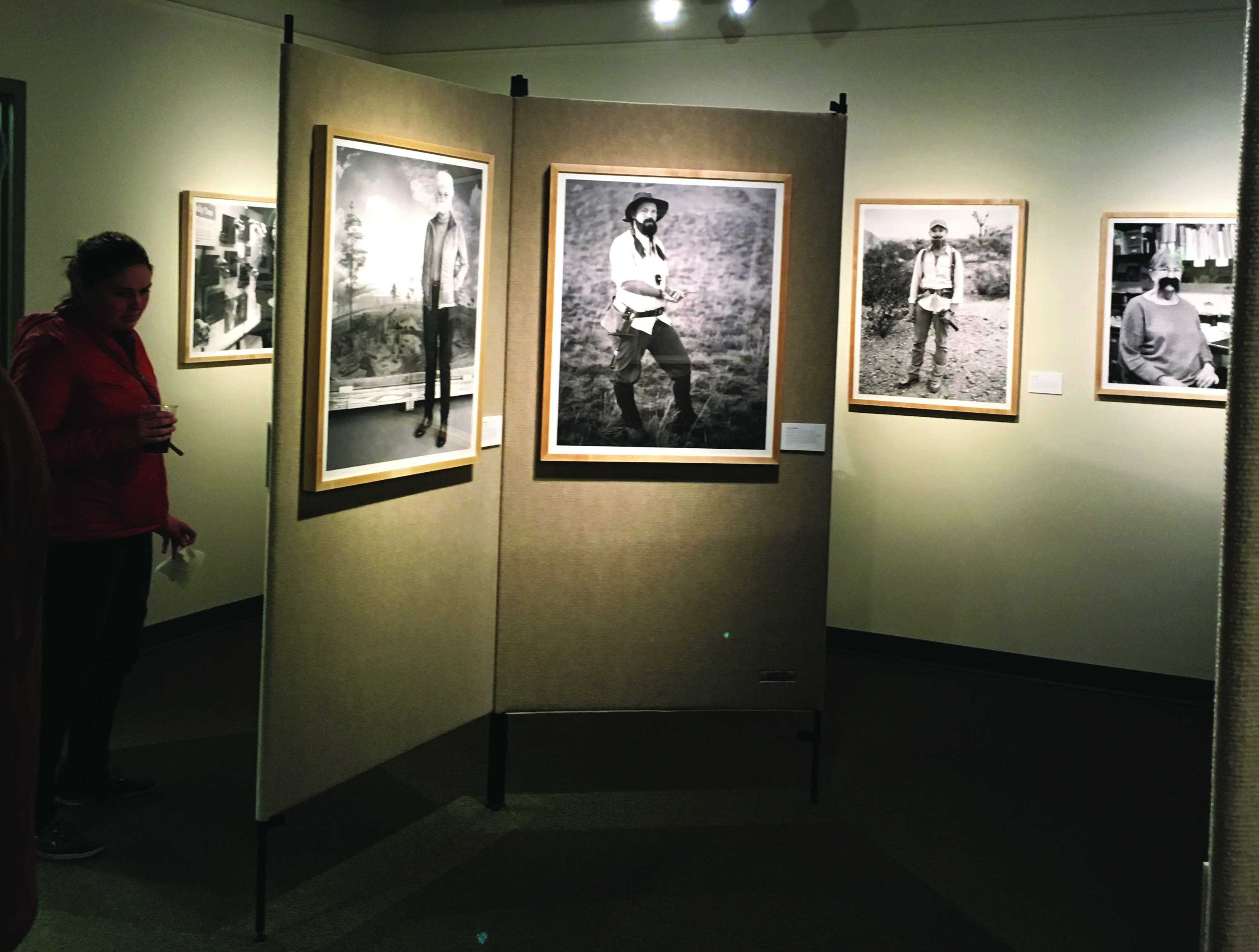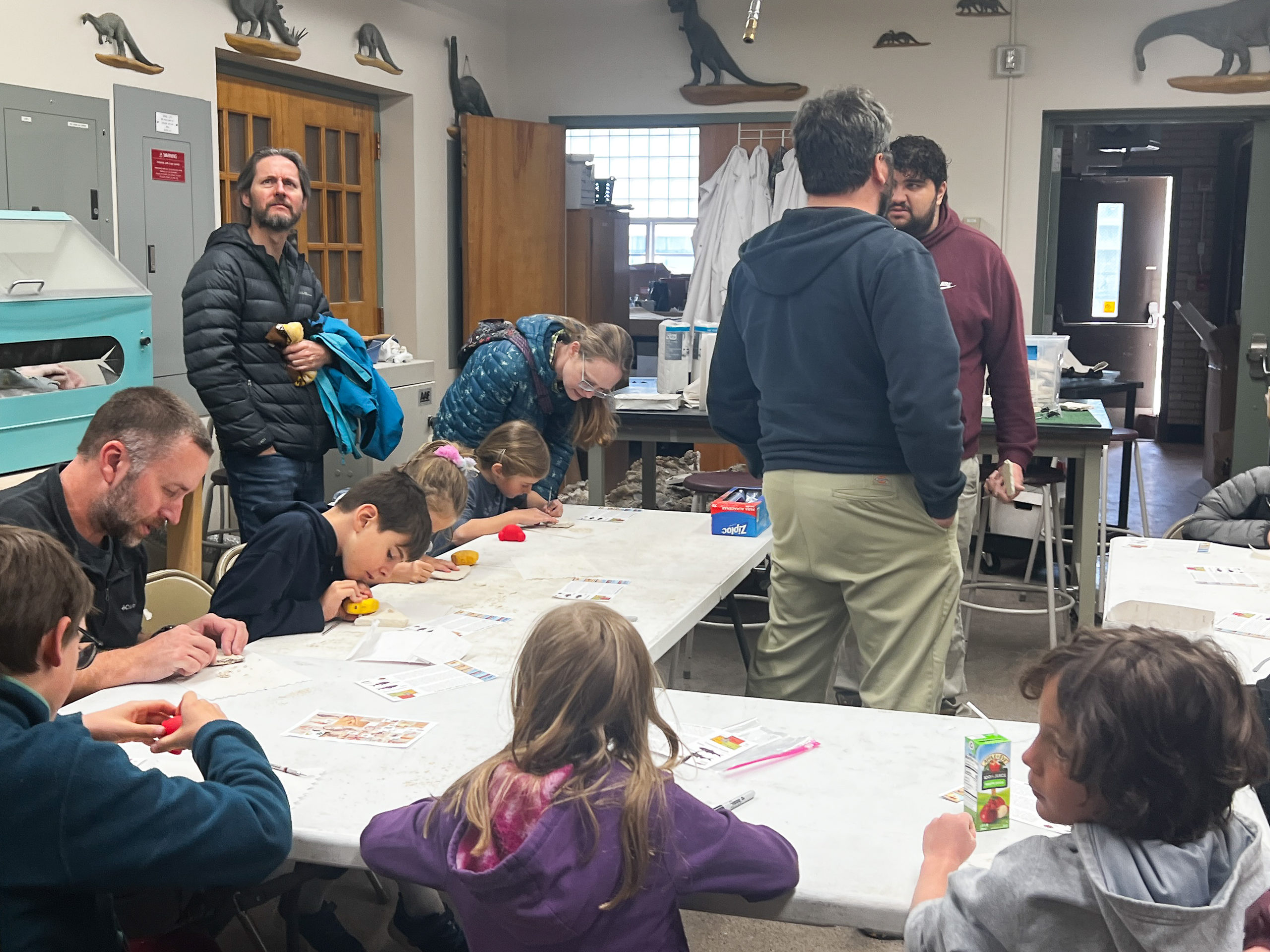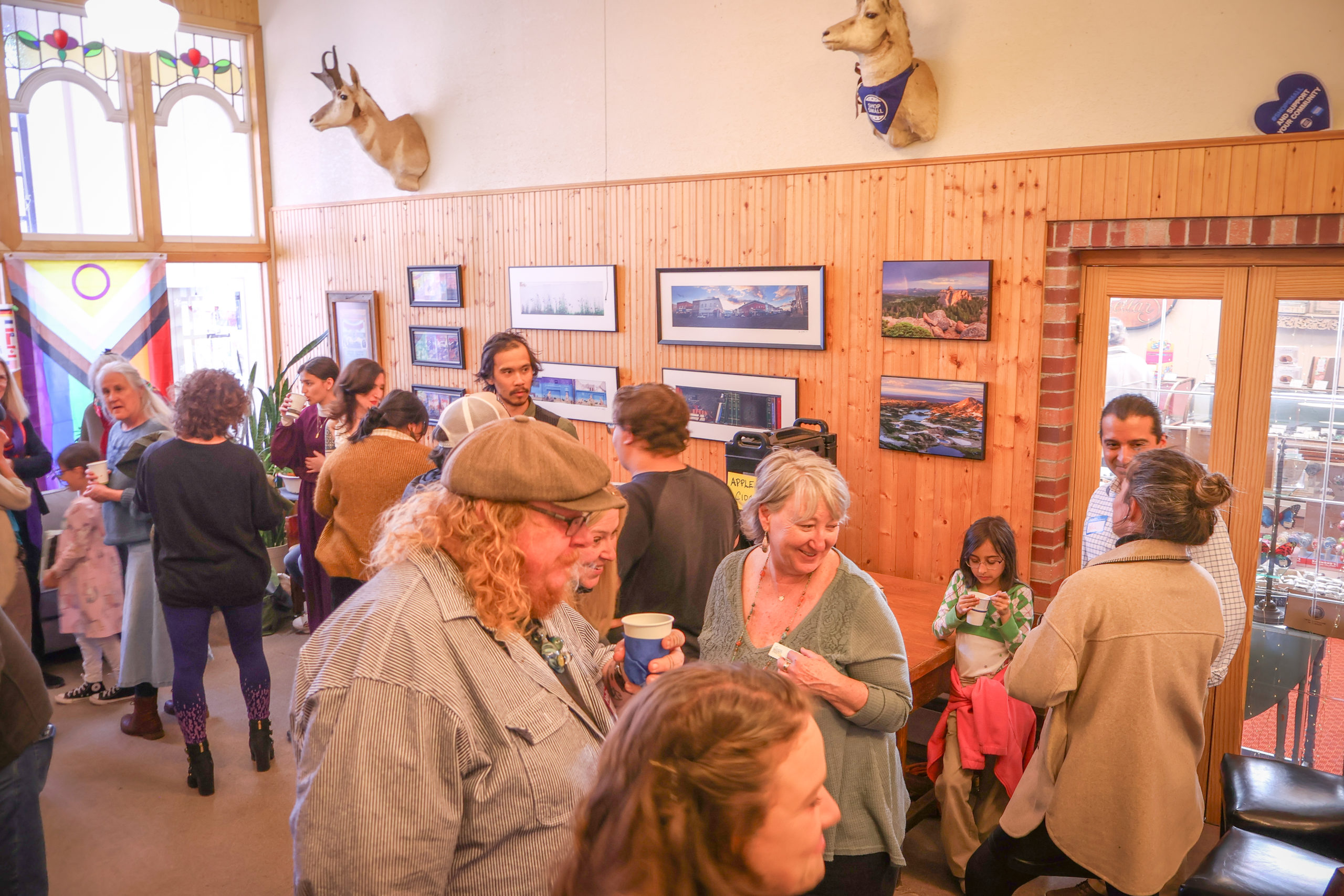The realm of scientific research and field work has, for decades, been dominated by men, and women have no choice but to fight tooth and nail to be taken seriously.
The Bearded Lady Project (BLP), founded by director Lexi Marsh, UW Paleontologist Ellen Currano and photographer Kelsey Vance, is a documentary film and photography project that depicts women paleontologists in the field wearing beards.
Last Friday, the BLP crew featured part of their documentary in the Classroom Building and held a Q&A for the audience. After the Q&A, the crew rounded the audience up to the Geology Building for the opening reception, where photos were put on display.
The three-year project is intended to celebrate women’s work in the field and highlight the difficulties of women scientists in their respective fields. Despite the project tackling the important issue of gender equality, the three women started it as a joke.
“When Ellen and I first started thinking of this proposal, we thought we could get maybe 10 women to participate and expected it to be a short, tongue-in-cheek thing we put online,” Marsh said. “When we went to Berkley and actually got 31 women total, that sort of spawned a forest fire of attention.”
The project is supported by Currano’s NSF Career Grant and allowed the women to travel across the U.S. and U.K. photographing different women.
“I think it is a project where it is weird enough, silly enough that it is more inviting than saying, ‘let us talk gender issues,’” Marsh said. “Who does not want to see a bearded lady?”
According to a press release from the BLP, the exhibit will feature a total of 40 different women in black-and-white portraits in an attempt to recreate historical photographs of female adventurers absent from most history and science books
“The collaboration between arts and science has been really successful, it allows people to come in to discover this issue deeper and experience it for themselves,” Marsh said. “Everybody comes in with their own story, we are not telling anybody how they should think.”
Since its creation, the project has gained additional help from Colorado photographer Draper White, who knew Marsh since high school.
“I have known Lexi since high school, she called me out of the blue after a few years of not hearing from each other,” White said. “She asked me if I wanted to get involved with this project, and I said, ‘of course!’”
White did not know what to expect with the project but quickly realized the scope of the impact it would have.
“I really had no idea what to expect, it just sounded like a fun project,” White said. “Once we started shooting and interviewing these women and hearing their stories, it became very real. We had no idea it was going to grow to the extent that it did.”
Though White was initially brought on as a photographer, he became the cinematographer for the documentary given his experience.
“I started as a photographer, but I ended up doing all the cinematography for the film, as I had been doing cinematography for a couple of years prior,” White said. “Kelsey is actually the person who was taking all the portraits of the women in the field.”
The photos in the collection are done in black and white and shot in a vertical layout. White said the groups intention was to emphasize the working conditions.
“I think part of it was to show what women would wear when they were out in the field, the only thing that we would change would be the facial hair,” White said. “Everything else would basically represent what a normal day of work in the field or lab would look like.”
The exhibit will be on display in the UW Geology building until May 16 when it moves to potentially another university. Admission is free but donations are encouraged, with proceeds going to support future female scientists.



